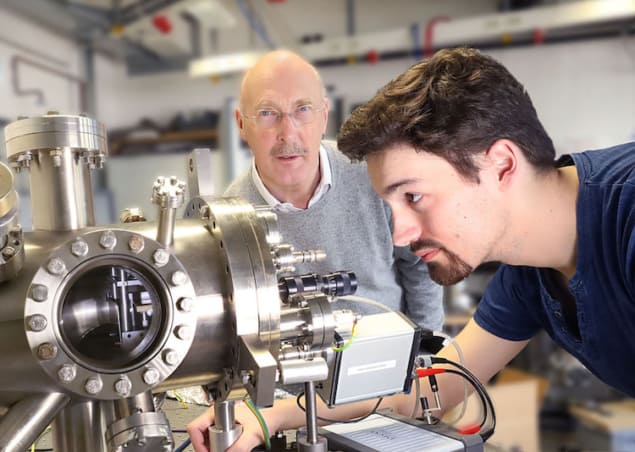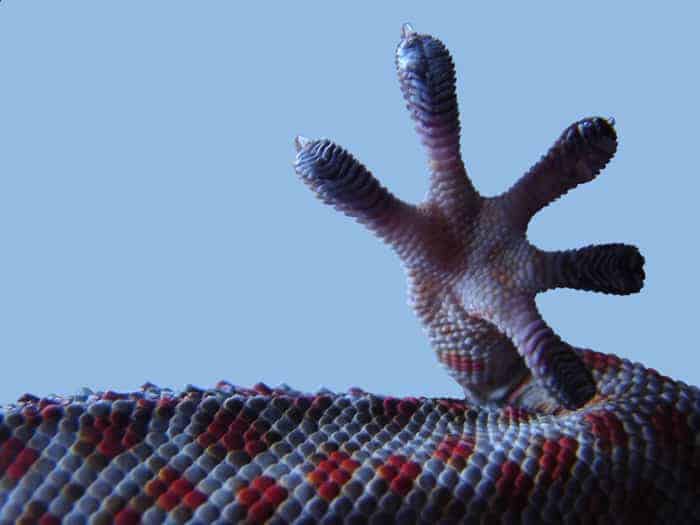
An apparently simple physics phenomenon known as contact electrical charging turns out to be far more complicated than was previously thought, according to new experiments by researchers at the University of Duisburg-Essen in Germany. The result could shed fresh light on the mechanisms by which one macroscopic metal object, such as a doorknob or key, becomes electrified through contact with another – an effect that is still not fully understood despite being observed and studied for more than 2000 years. These new insights could, in turn, drive improvements in technologies that rely on triboelectricity, which is the form of contract charging responsible for most everyday instances of static electricity and is widely employed in devices such as photocopiers and laser printers.
Contact electrification can occur whenever two surfaces touch. It is common in nature and is responsible for lightning in thunderstorms, sandstorms and volcanic plumes. It is also a known industrial hazard since the electric discharges it produces can destroy electrical contacts and even cause explosions in flammable powders or liquids.
Contradiction to established theory
For metal-metal contacts, contact electrification was thought to be relatively well understood. The established theory, articulated by the physicist W R Harper in 1951 and expanded upon by J Lowell in 1975, predicts that the kinetic energy (or impact velocity) of two metal objects that contact each other does not affect the charge transferred between them via contact electrification.
However, researchers led by Rolf Möller and Hermann Nienhaus of Duisburg-Essen’s Faculty of Physics and Center for Nanointegration have now found something else entirely. Their experiments show that the charge transferred as a particle bounces off a surface is related to the impact velocity and is also much higher than predicted. This result is important, Möller says, because the underlying mechanism will apply to insulator-metal and insulator-insulator contacts, too.
Astrophysical inspiration
Möller’s team became interested in this topic after discussions with a colleague working in an entirely different field: astrophysics. “Our colleague told us about an unsolved problem in planetary formation that might be explained if particles just millimetres in size acquired electrostatic charges when they collide,” Möller explains. “To shed more light on this hypothesis, we designed an experimental scheme to study the charging of particles in detail.”
The team’s experimental design rests on a familiar principle: charges of opposite sign attract each other. Hence, if a positively-charged object approaches the surface of a conductor along which negatively-charged electrons move freely, the object will attract those negative charges to its surface – a phenomenon known as electrostatic induction.
By measuring the charge that remains on the conductor, Möller notes that it is possible to detect the presence of the positively-charged object without making electric contact with it. Since this effect depends on the distance between the object and the conductor, it can also be exploited to analyse the object’s motion. This, Möller says, is the fundamental principle of the new experiments. “The idea was to detect the charge before and after a collision between a gold sphere and a copper plate,” he explains. “We found we could resolve the charge transfer process with an unprecedented temporal resolution of down to just 1 microsecond.”

Static electricity helps geckos get a grip
Deviation from ideal geometry
In the calculations accompanying their experiment, which they detail in Science Advances, the researchers included the tiny deformation of both the sphere and the plate when they collide. This deformation, they suggest, allows the surfaces of the sphere and plate to fit almost snugly during contact, producing a larger area of contact and a larger capacity. The latter is crucial because the amount of charge transferred is equal to the potential difference multiplied by the capacity at the very moment when the contact breaks. “Even if the contact area decreases when the contact breaks, the capacity will still be larger than for the case without deformation. That is why the transferred charge increases with increasing impact velocity,” Möller tells Physics World.
Surface deformation may also play an important role in contact electrification for insulator-metal and insulator-insulator contacts, leading to an increase of transferred electric charge, he adds. “Preliminary tests have shown that our experimental techniques work equally as well for these kinds of contacts too and this one of the directions of research we want to pursue in the near future.”



